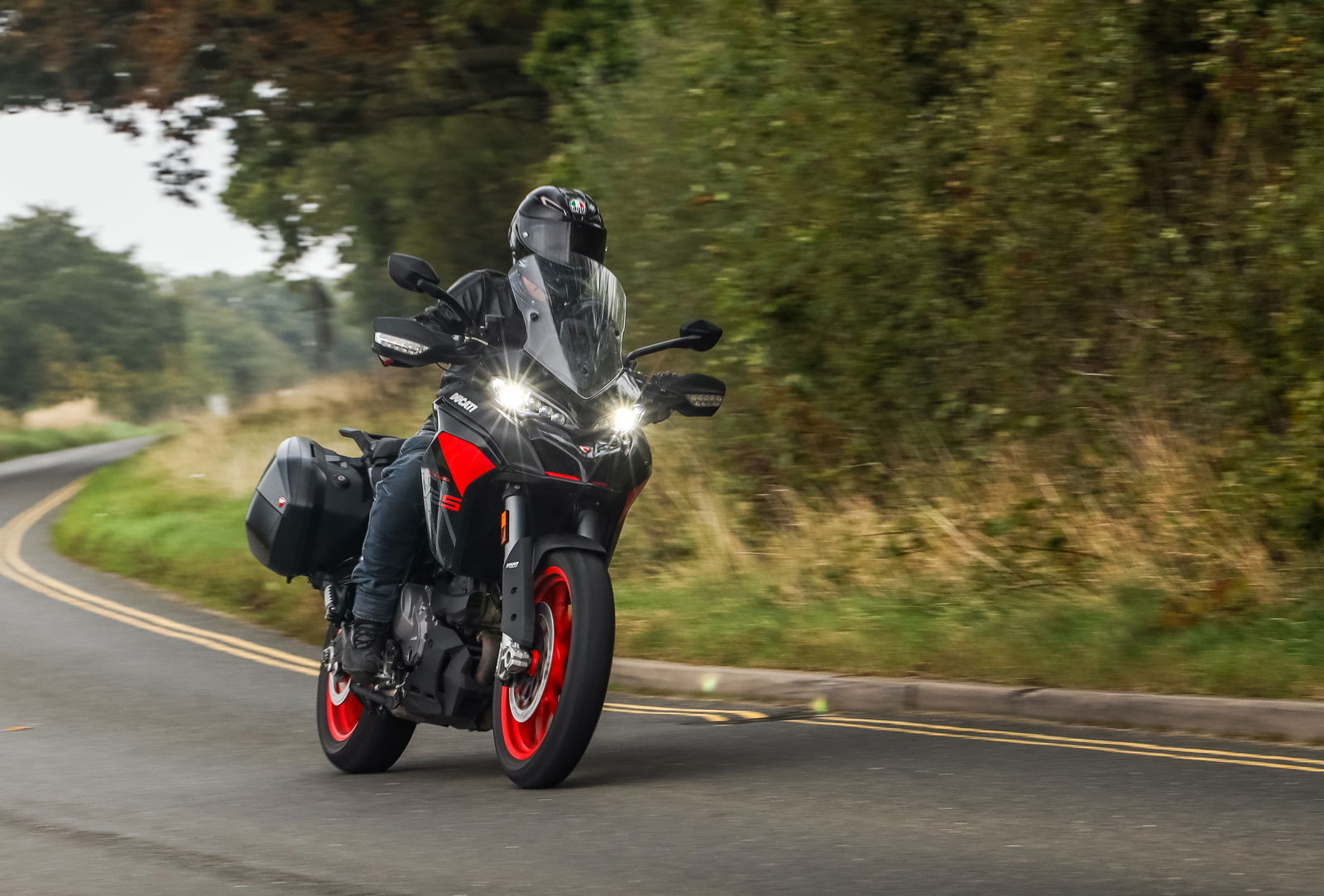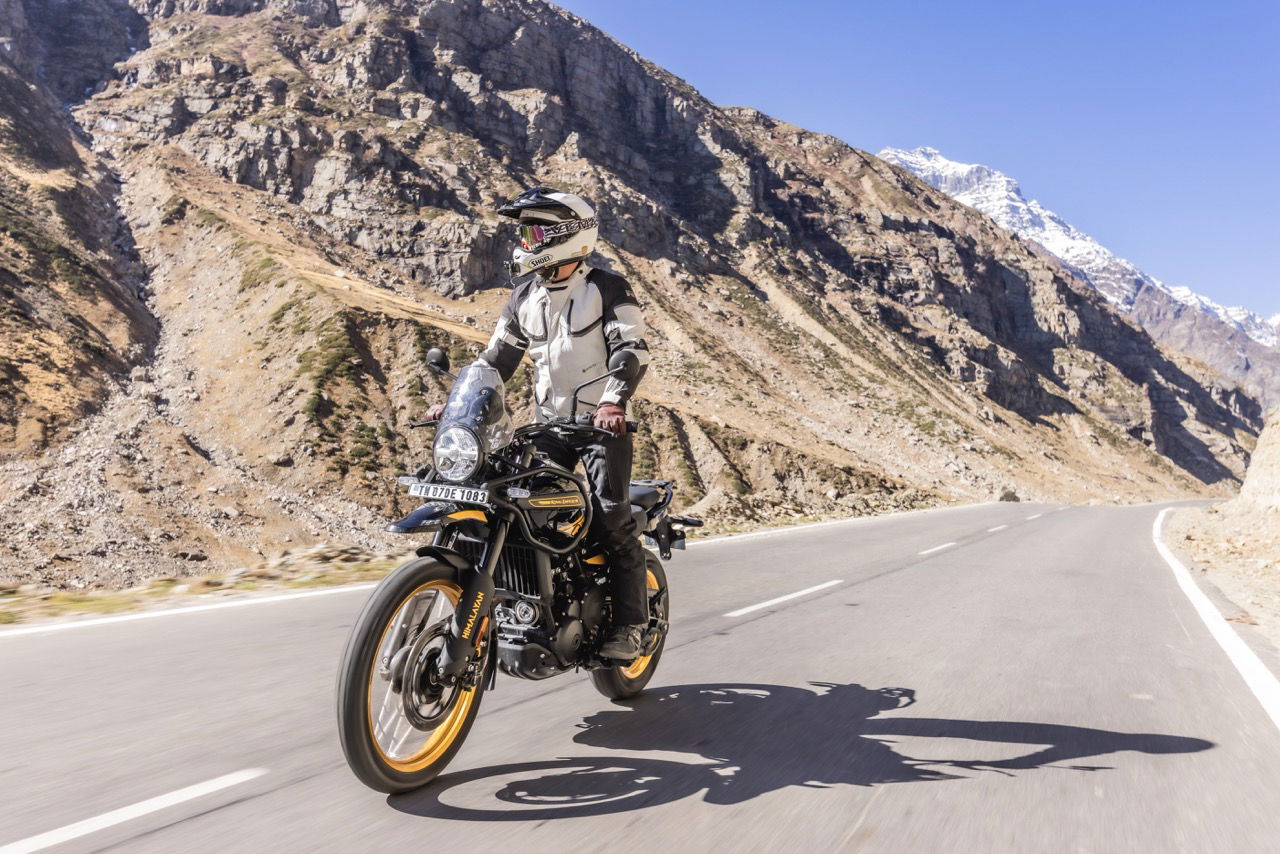Suzuki V-Strom 800 RE review: another talented middleweight ADV
Choosing a road-oriented, middleweight adventure bike just got a bit harder, as the 800 RE is a new option that’s well worth considering

It's important for adventure bike riders to be honest with themselves. Are they really going to be replicating those mud-plugging or desert-bashing antics seen in the press and marketing snaps, or are they merely after something with a bit more suspension travel to soak up the shitty road surfaces UK-based riders have to contend with, and some versatility in terms of luggage mounting points and the like?
Happily, manufacturers have gotten pretty good at covering both ends of the ADV spectrum. The latest example of this is the Suzuki V-Strom 800 RE, the new sibling to the V-Strom 800 DE. The DE or 'Dual Explorer,' with its ample front and rear squish, is there for anyone wanting to tackle rougher stuff - or at least people who'd like to think they will - and now there's the RE, or 'Road Explorer', for everyone else.

Having ridden the DE on- and off-road earlier this year, and more recently clocking around 400 miles on one in the UK, we went to the 800 RE's international launch in Montpellier, in southern France. There, we sampled the bike on a long and varied route covering urban riding, sweeping bends, challengingly twisty country roads and a bit of motorway to see what the new bike is like.
Engine, frame, chassis and technology
The 800 RE uses the same steel frame and separate steel subframe as both the DE and the GSX-8S, along with the 776cc parallel twin featured in those bikes. This long overdue platform has given us the first properly new Suzuki models in a long time.
The new engine features the very much in-vogue 270-degree crankshaft, giving an offset firing order and thus the character of a V-twin without the associated packaging issues and added complexity. It produces 83bhp and 57lb ft of torque, and is fuelled by a 20-litre fuel tank, meaning a sympathetic use of the throttle can yield a range in excess of 250 miles.
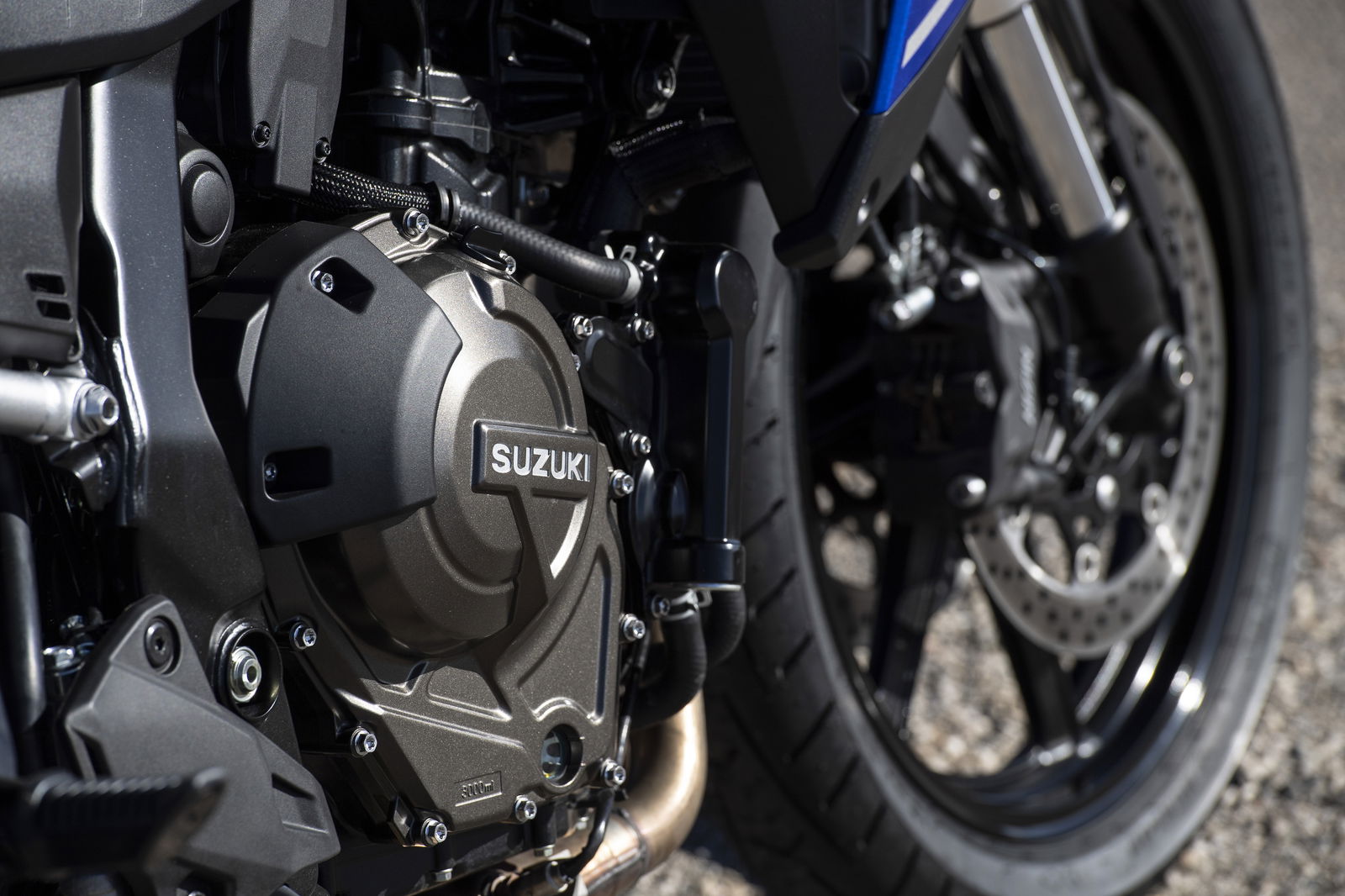
So far, so similar, but Suzuki has done plenty to make the RE more suited to asphalt. The 21-inch front and 17-inch rear wire wheels with Dunlop Trailmax Mixtour tyres and inner tubes are gone, replaced with a 19-inch front/17-inch rear cast combo sporting tubeless Dunlop D614 tyres. Suspension travel meanwhile from the catchily named Showa Seperate Function Fork - Big Piston (SSFF-BP) has dropped from 220mm to 150mm, with the same reduction for the Showa monoshock at the back. The fork has lost its full adjustability, but both it and the monoshock are preload adjustable, the latter from an easily accessible remote dial to the right of the bike.
The riding position isn't the same, either. A new, narrower bar puts the rider's arms lower and slightly further forward, while the pegs have gone a little further back and higher up. Thanks to the ride height reduction, the V-Strom 800 RE qualifies as a low-seat adventure bike, with its 825mm perch coming in 30mm lower than the DE's.
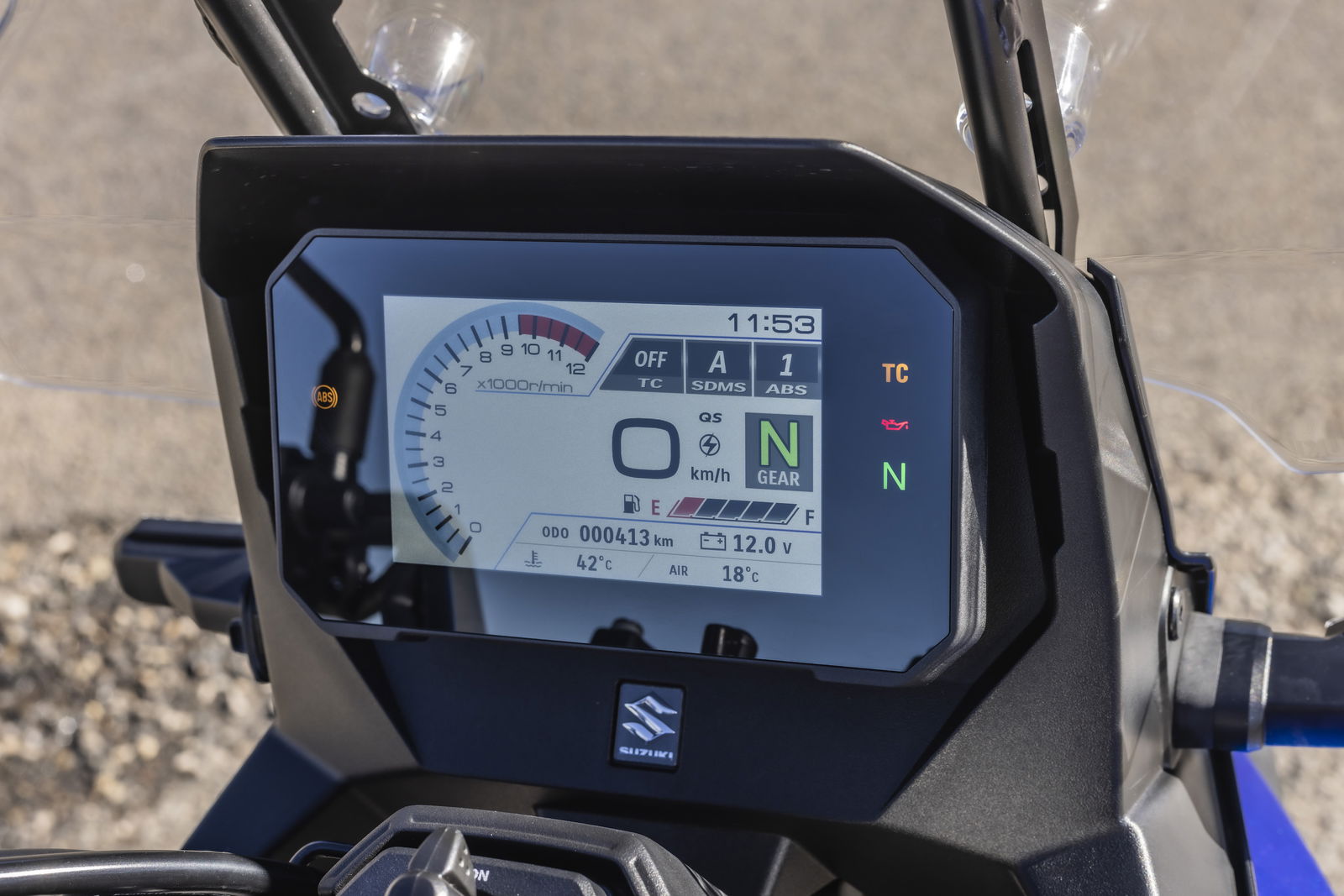
The electronics are for the most part the same. You get the same five-inch colour TFT, a trio of 'SDMS' throttle modes and three traction control levels (four if you include the fully offsetting). There's no 'dirt' mode to turn the ABS off as on the DE, but the system does have two settings to choose from. An up-and-down quickshifter is fitted as standard - something a lot of rivals charge for in this segment.
What it’s like to ride
It's a testament to how good a road bike the 800 DE is despite its generous suspension travel that the 800 RE isn't an instant revelation. Start to push on, though, and the differences become clearer.
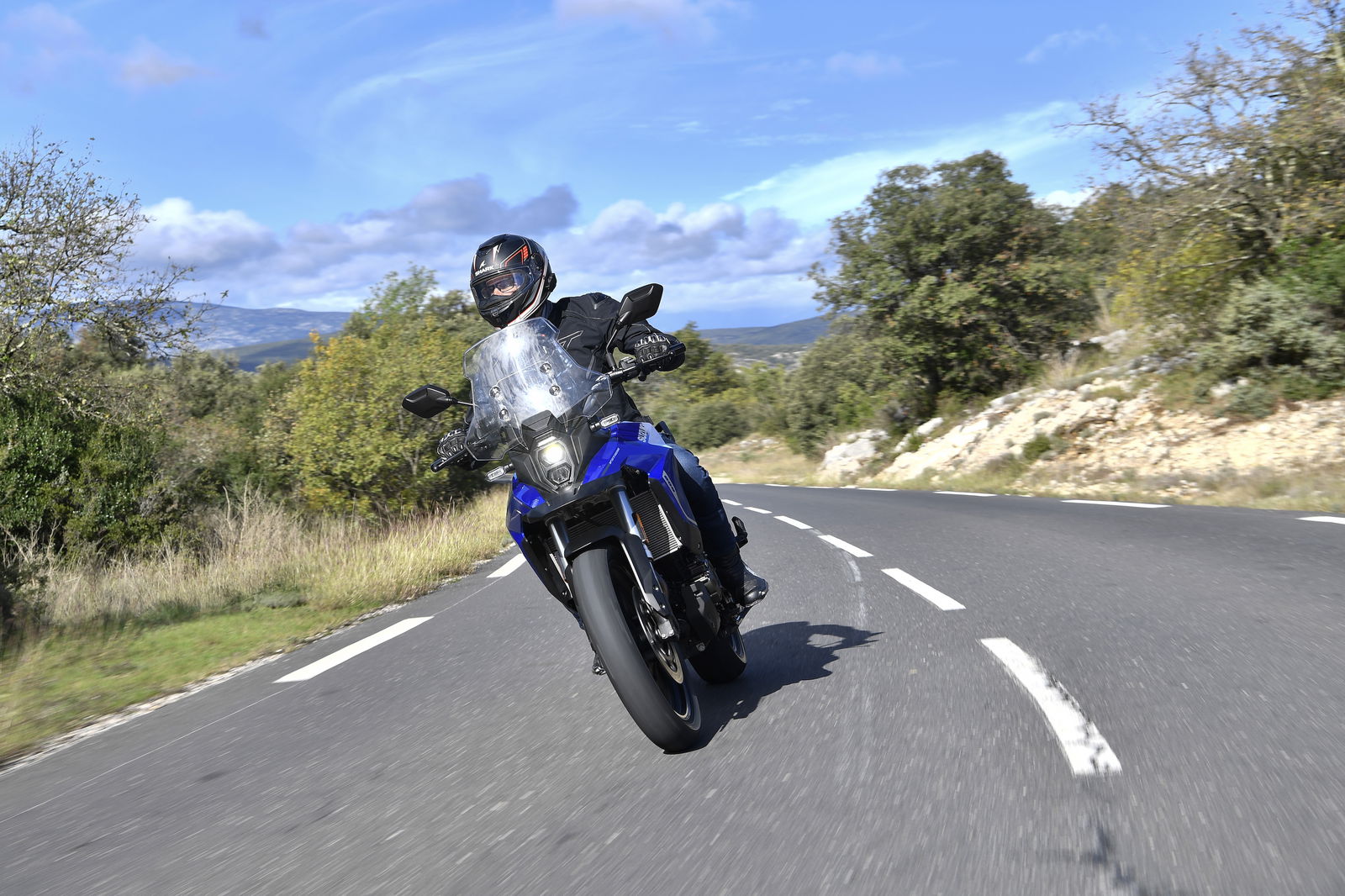
Thanks to that smaller front wheel, the RE is much keener to change direction and will tip in with less reluctance. The shorter travel, and firmer suspension setup help further, while also cutting down on dive and squat noticeably. The setup hasn't been firmed up to the point where comfort is significantly compromised, and there's still plenty of give in the suspension to soak up shoddily surfaced roads.
The parallel-twin remains a lovely little thing. It might not feel as gutsy at the bottom end as the CP2 twin Yamaha sticks in its rivalling Tracer 7 (along with a bunch of other bikes) and isn't quite as exciting at the top end as Honda's new engine for the CB750 Hornet and XL750 Transalp, but it is probably a better-rounded unit than either.

Pootling around town at lower speeds and lower revs, it's nicely smooth, with a decent chunk of mid-range torque making for easy progress. Heading out of town, it becomes an entertaining engine to rev out, with a decent-sounding bark when approaching the 8,500rpm mark at which the motor produces its peak power.
In this bigger, heavier setting than the GSX-8S, the twin does lose some of its urgency, but in most situations it feels more than fast enough for most riders. The quickshifter is enjoyable to use and worked faultlessly throughout the ride - and weirdly, it seemed smoother on the downshifts than on the DE we recently tested.
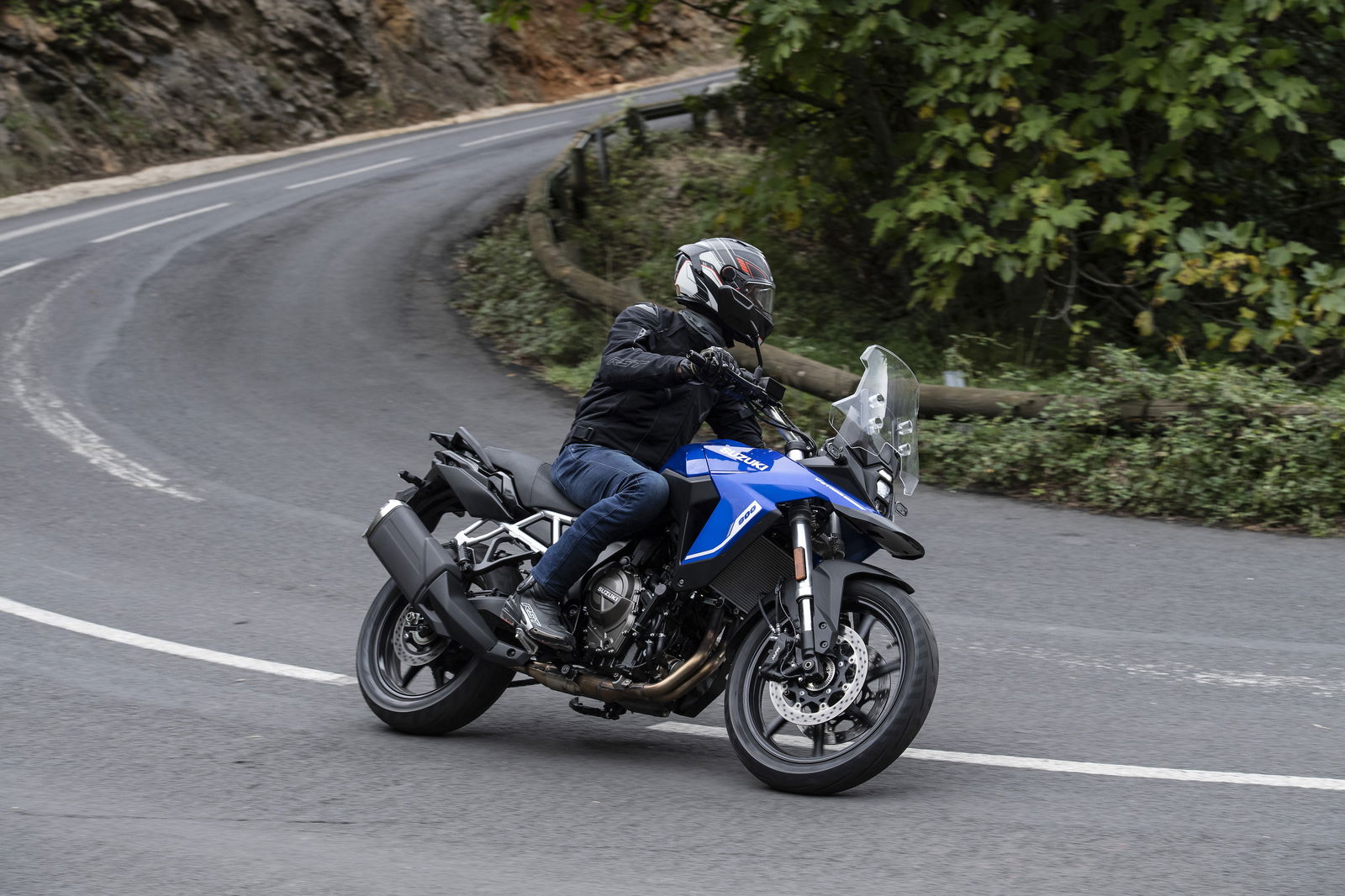
At some engine speeds the twin does make the bars and the pegs a touch vibey, but not badly enough to be irritating. What might prove more annoying on longer trips is the screen. It's bigger than the DE's, but as found on most adventure bikes, it's not great for taller riders, tending to shoot high-pressure air directly at your head. It does have three different positions, of which we tried the tallest and the lowest, marginally preferring the latter. Adjustment can't be done on the fly - it involves four Allen-head bolts.
The display looks basic compared to something like the fancier TFT KTM sticks on its 790 Adventure and 890 Adventure models, but it's easy to read and includes all the information you'll realistically need. Flicking through menus and changing rider modes is easy thanks to the chunky controls by the left-hand grip, but a lack of Bluetooth connectivity seems a shame. There is a USB-A socket to the left side of the screen, though.
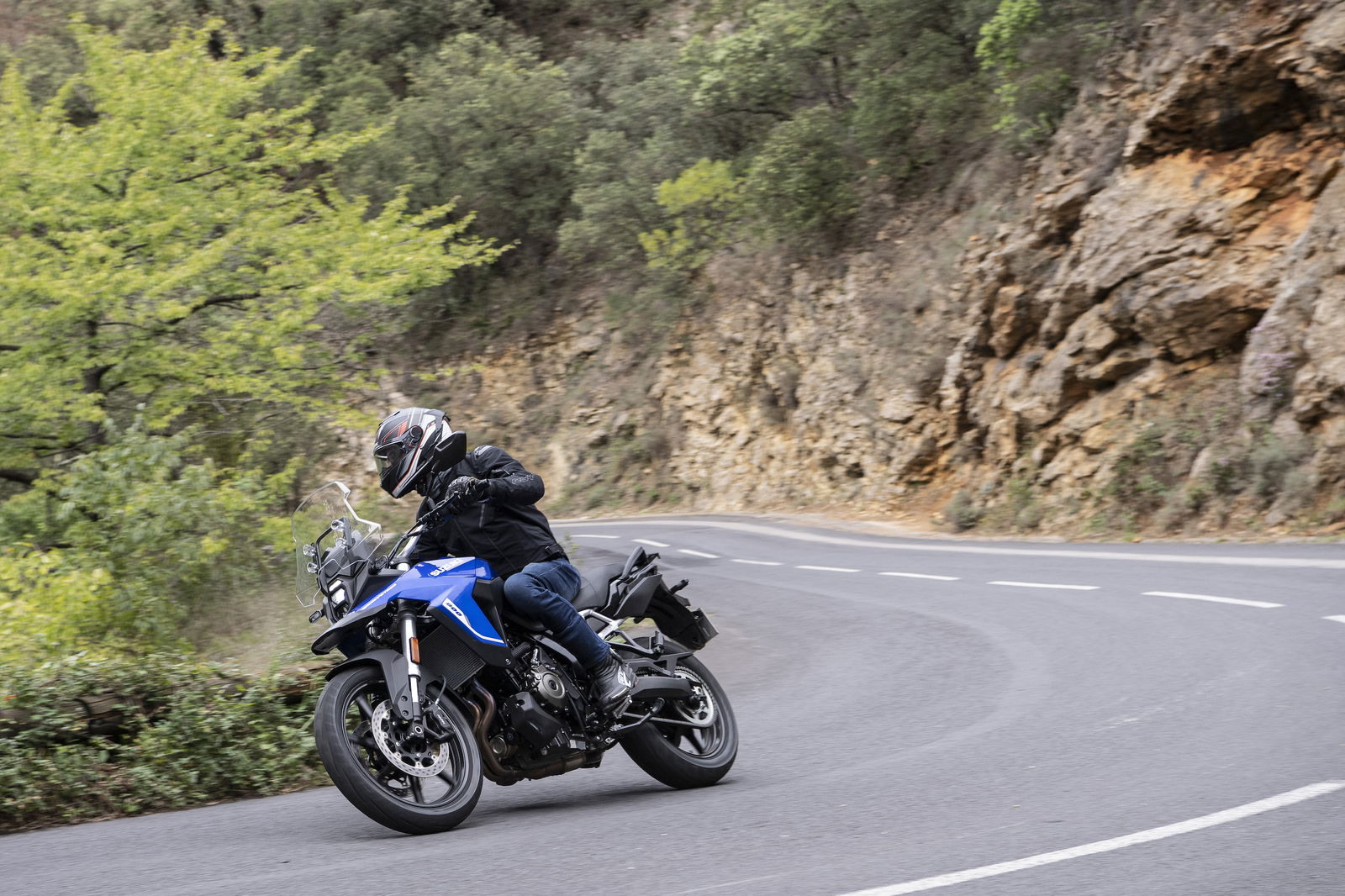
Build quality seems decent, although there are a few cheaper-feeling bits, like the plastic trim surrounding the ignition barrel. However, this isn't an expensive bike, so it's all forgivable. The bike looks the most premium in the Metallic Matt Steel Green, although the Pearl Vigor Blue does pop quite nicely. If you want to fly under the radar there’s Glass Sparkle Black, but we can’t help but find that hue a bit boring.
Should you buy a Suzuki V-Strom 800 RE?
The 800 RE is another impressive new-era Suzuki bike that's easy to recommend, with great all-round ability and a keen price. It'll make more sense for more riders than the DE, which is £1,000 more expensive than this newer V-Strom variant. Whether you're after a commuter which can be exciting when it wants to be or a tourer that'll lap up the twisty, mountainous stuff at your destination, the RE is worth considering.
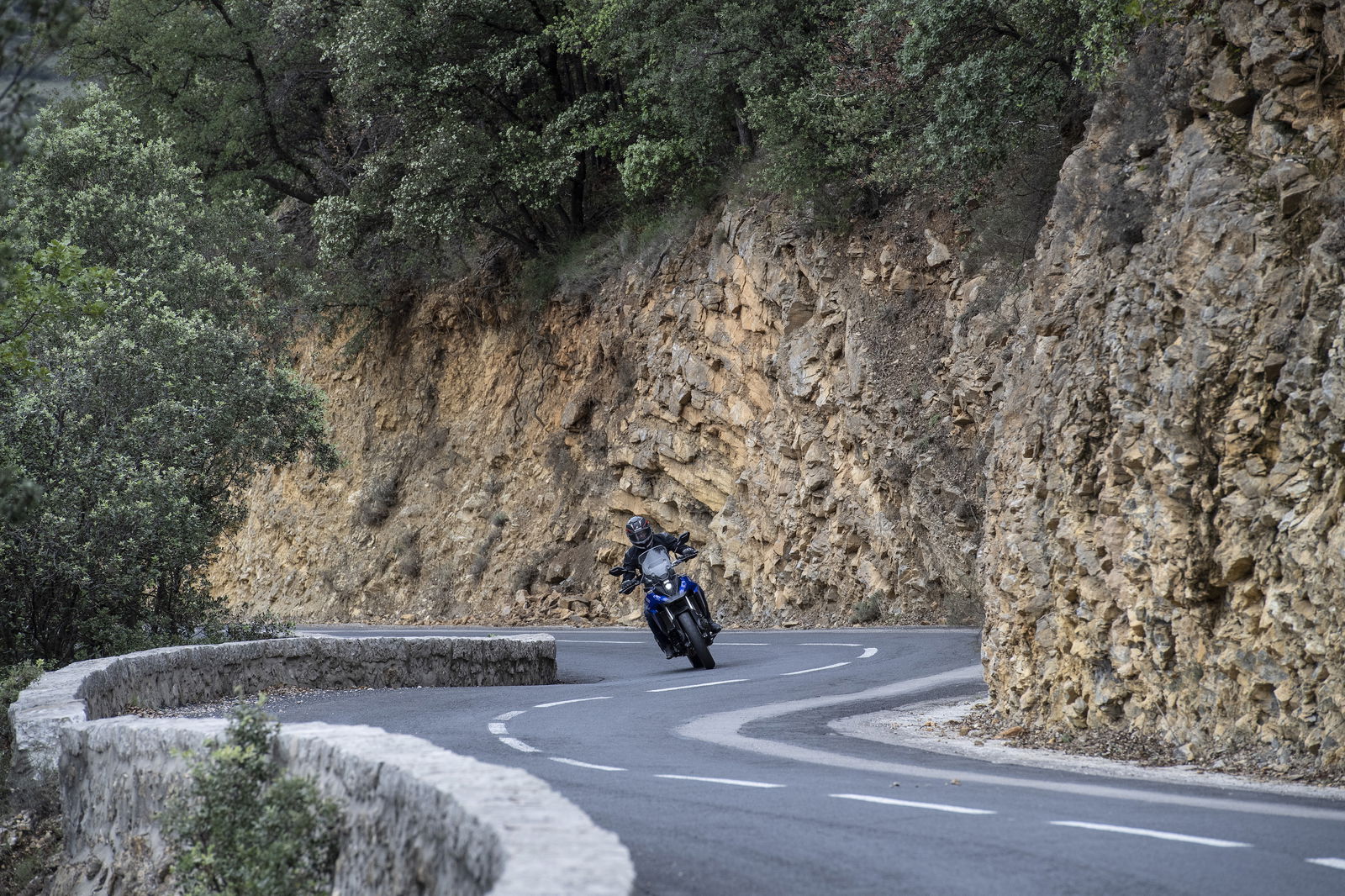
The only problem for the bike is the sheer amount of choice in this segment. At £9,699 it looks like good value, but this figure puts it in the crosshairs of all sorts of bikes, including the Yamaha Tracer 7, Triumph Tiger Sport 660 and, to an extent, the Honda XL750 Transalp.
Suzuki doesn’t have the brand allure it once does, and the RE isn’t as good to look at as some of the other road-oriented, middleweight ADV options. Given the sheer amount of choice, it's worth taking a good look around and considering your choices, but the Suzuki makes a strong case for itself, and thus should absolutely be on your shortlist.
